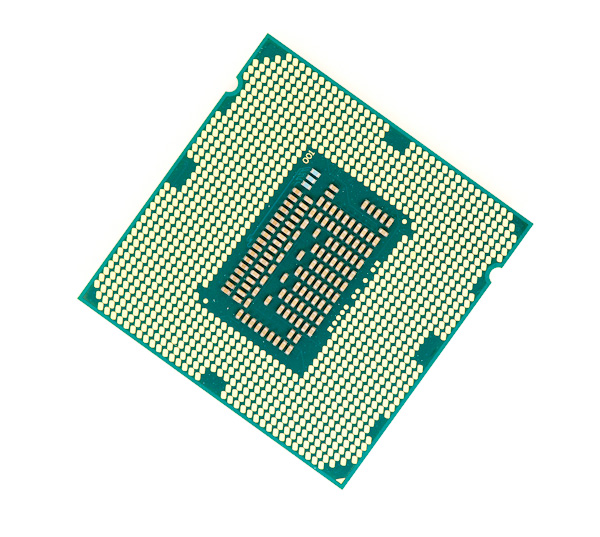Intel Core i5 3470 Review: HD 2500 Graphics Tested
by Anand Lal Shimpi on May 31, 2012 12:00 AM EST- Posted in
- CPUs
- Intel
- Ivy Bridge
- GPUs
Final Words
Intel's Core i5-3470 is a good base for a system equipped with a discrete GPU. You don't get the heavily threaded performance of the quad-core, eight-thread Core i7 but you're also saving nearly $100. For a gaming machine or anything else that's not going to be doing a lot of thread heavy work (e.g. non-QuickSync video transcode, offline 3D rendering, etc...) the 3470 is definitely good enough. Your overclocking options are significantly limited as the 3470 is a partially unlocked CPU, but you can pretty much count on getting an extra 400MHz across the board, regardless of number of active cores.
Intel's HD 2500 however is less exciting. This is clearly the processor graphics option for users who don't care about processor graphics performance. The 2500's performance is tangibly worse than last year's HD 3000 offering (which makes sense given the 6 EU configuration) and it's not good enough to be considered playable in any of the games we tested. The good news is Quick Sync performance remains unaffected, making HD 2500 just as good as the HD 4000 for video transcoding. In short, if you're going to rely on processor graphics for gaming, you need the HD 4000 at a minimum. Otherwise, the HD 2500 is just fine.











67 Comments
View All Comments
duploxxx - Thursday, May 31, 2012 - link
you could ask why even bother to add a GPU here, it is utter crap.now lets have a look at teh other review what they left in the U 17W parts ......
PrinceGaz - Thursday, May 31, 2012 - link
Because most people don't buy a PC to play the latest games or do 3D rendering work with it.CeriseCogburn - Monday, June 11, 2012 - link
Correct PrinceGaz, but then we have the amd fan boy contingent, that for some inexplicably insane fatnasy reason, now want to pretend llano, trinity and hd graphics are gaming items...The whole place has gone bonkers. But a freaking video card, every *********** motherboard has one 16x slot in it.
mother of god !
ananduser - Thursday, May 31, 2012 - link
I noticed you ran a BF3 bench and assumed that the game is playable on a HD4000. Have you actually played the game with the HD4000 on a 32 player map. I dare you to try and update this review and say that BF3 is "playable" on a HD4000.JarredWalton - Thursday, May 31, 2012 - link
"The HD 4000 delivered a nearly acceptable experience in Battlefield 3..." I wouldn't call that saying the game is "playable". Obviously, the more people there are on a map the worse it gets, but if you're playing BF3 on 32 player maps (or you plan to), I'd hope you understand that you'll need as much GPU (and quite a bit of CPU) as you can throw at the game.That said, I'll edit the paragraph to note that we're discussing single-player performance, and multiplayer is a different beast.
ananduser - Thursday, May 31, 2012 - link
Well, when one sees 37 fps BF3, one might wrongly assume that: "OMG 37 FPS on a thin and low powered [insert ultrabook brand]"; I'm going tomorrow and buying it.I think that playing the game for 5-10 minutes with FRAPS enabled and providing highest/lowest FPS count for each hardware setup is more revealing than running built-in engine demos.
CeriseCogburn - Friday, June 1, 2012 - link
Don't forget this applies to AMD Trinity whose crappy cpu will cave in on a 32 player server.ananduser - Thursday, May 31, 2012 - link
Oh and I doubt single player performance will ever touch that 37 data point as well.JarredWalton - Thursday, May 31, 2012 - link
On the quad-core desktop IVB chips it surely will -- that's why the result is in the charts -- but for laptops? Nope. I think the best result I've gotten (at minimum details and 1366x768) is around 25-26FPS in BF3.ltcommanderdata - Thursday, May 31, 2012 - link
"Intel has backed OpenCL development for some time and currently offers an OpenCL 1.1 runtime for their CPUs, however an OpenCL runtime for Ivy Bridge will not be available at launch. As a result Ivy Bridge is limited to DirectCompute for the time being, which limits just what kind of compute performance testing we can do with Ivy Bridge."http://software.intel.com/en-us/articles/vcsource-...
The Intel® SDK for OpenCL Applications 2012 has been available for several weeks now and is supposed to include GPU OpenCL support for Ivy Bridge. Isn't that sufficient to enable you to run your OpenCL benchmarks?
http://downloadcenter.intel.com/Detail_Desc.aspx?a...
If not, the beta drivers for Windows 8 also support Windows 7 and adds both GPU OpenCL 1.1. support and full OpenGL 4.0 support including tessellation so would allow you to run your OpenCL benchmarks and a Unigine Heaven OpenGL tessellation comparison.